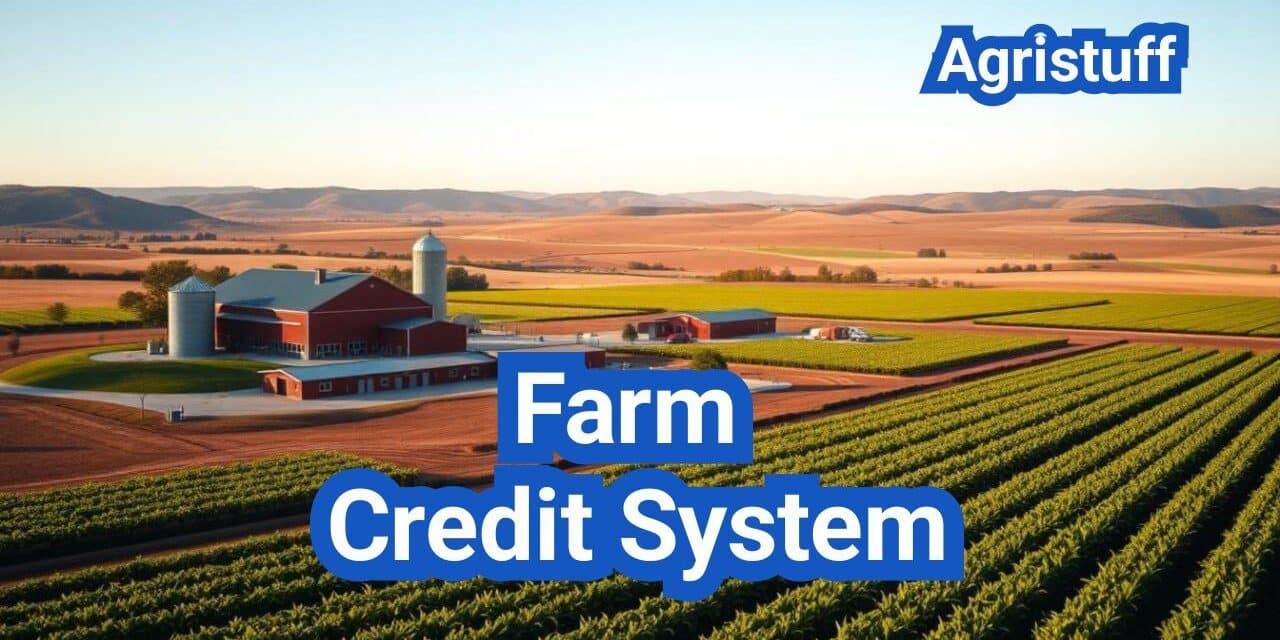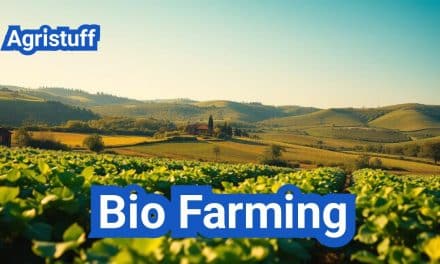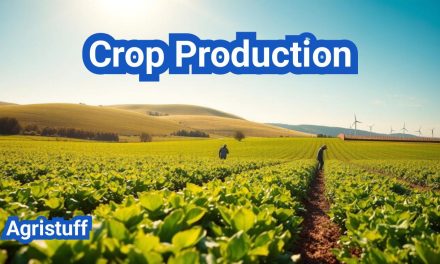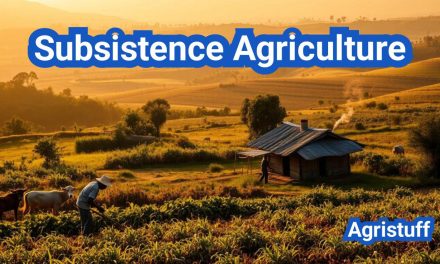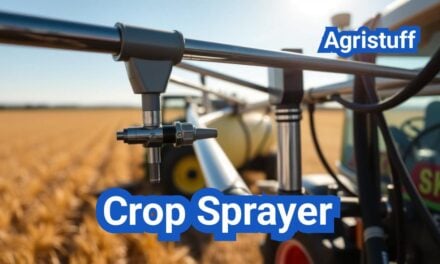This article does not contain financial advice
The Farm Credit System is a network of borrower-owned lending institutions that provides financing to farmers, ranchers, and rural communities across the United States.
This unique agricultural lending institution is designed to support the specific needs of the agricultural sector, offering competitive rates and tailored financial solutions.
The Farm Credit System has become a vital component of rural America financing, providing access to capital for those who might not qualify through traditional banking channels.
By understanding how the Farm Credit System works, farmers and rural landowners can make informed decisions about their financial options.
Key Takeaways
- The Farm Credit System is a borrower-owned lending network.
- It provides financing to farmers, ranchers, and rural communities.
- The system offers competitive rates and tailored financial solutions.
- It is a vital component of rural America financing.
- Farmers and rural landowners can benefit from understanding the system’s operations.
What is the Farm Credit System and How It Operates
As a government-sponsored enterprise, the Farm Credit System plays a crucial role in providing financial services to rural America. The FCS is designed to support the agricultural sector by offering a range of financial products and services tailored to the needs of farmers, ranchers, and rural communities.
Definition and Mission of the FCS
The Farm Credit System is a cooperative network of financial institutions that provides credit and related services to its members. The mission of the FCS is to support agriculture and rural America by providing reliable and consistent credit and financial services. The FCS achieves this mission by offering a variety of loan products, including agricultural real estate loans, operating lines of credit, and farm equipment financing.
The FCS is owned by its borrowers, who are also its customers. This cooperative structure allows the FCS to return profits to its members in the form of patronage dividends, which can be used to reduce loan interest rates or provide other benefits.
Government-Sponsored Enterprise Status
As a government-sponsored enterprise (GSE), the Farms Credit System operates under a federal charter that gives it certain privileges and responsibilities. The GSE status allows the FCS to access capital markets at favorable rates, which enables it to provide competitive loan rates to its borrowers. In return, the FCS is subject to regulatory oversight by the Farm Credit Administration (FCA), ensuring that it operates safely and soundly.
The GSE status also reflects the FCS’s role in serving a public purpose – supporting agriculture and rural development. This status is a key factor in the FCS’s ability to provide financial services to rural areas that might otherwise be underserved.
Serving Rural America’s Financial Needs
The Farm Credit System is committed to serving the financial needs of rural America. The FCS provides a range of financial products and services designed to meet the unique needs of agricultural businesses and rural communities. From farm operating loans to rural home financing, the FCS offers a variety of loan products that are tailored to the specific needs of its borrowers.
By providing access to capital and financial services, the FCS plays a vital role in supporting rural economic development. The FCS’s commitment to serving rural America is reflected in its extensive network of local associations and banks, which are dedicated to understanding and meeting the financial needs of their communities.
History and Evolution of the Farm Credit System

With roots in the early 20th century, the Farm Credit System was born out of the Federal Farm Loan Act of 1916. This landmark legislation was designed to provide a reliable source of credit for farmers and ranchers, addressing the long-standing issue of agricultural financing. The creation of the Farm Credit System marked a significant shift in how agricultural credit was approached in the United States.
Origins in the Federal Farm Loan Act of 1916
The Federal Farm Loan Act of 1916 was a response to the growing need for agricultural credit. Prior to its enactment, farmers often struggled to secure loans due to the seasonal nature of their income and the lack of collateral. The Act established the Farm Credit System as a network of cooperative banks that would provide long-term credit to farmers. As noted by agricultural finance experts, “The Farm Credit System was designed to be a farmer-owned cooperative, providing credit to those who needed it most.”
The Farms Credit System’s structure was innovative for its time, allowing farmers to become member-owners and participate in the decision-making process. This cooperative model was seen as a way to ensure that the financial needs of farmers were met in a more tailored manner.
Major Reforms and Restructuring
Over the years, the Farm Credit System has undergone significant reforms and restructuring efforts. One of the most notable changes occurred in the 1930s with the passage of the Farm Credit Act of 1933. This legislation reorganized the Farm Credit System, creating a more centralized structure and expanding its lending authorities. As stated in historical records, “The Farm Credit Act of 1933 was a critical step in modernizing the Farm Credit System, enabling it to better serve the evolving needs of American agriculture.”
Further reforms continued into the latter half of the 20th century, with amendments aimed at enhancing the system’s efficiency and expanding its services. These changes reflected the ongoing efforts to adapt the Farm Credit System to the changing landscape of American agriculture.
Response to the 1980s Agricultural Crisis
The 1980s presented significant challenges to the agricultural sector, with a severe crisis affecting farmers across the United States. The Farm Credit System played a crucial role during this period, providing financial assistance to farmers struggling with debt. The system’s ability to offer flexible loan restructuring and other support measures helped many farmers navigate the crisis. According to a report, “The Farms Credit System’s response to the 1980s agricultural crisis demonstrated its value as a stable source of credit during times of economic stress.”
The experience of the 1980s led to further refinements in the Farms Credit System, with a focus on enhancing its resilience and ability to respond to future challenges. These efforts have continued to evolve, ensuring that the system remains a vital component of agricultural finance in the United States.
Structure and Regulation of the Farm Credit System in the USA
Understanding the structure and regulation of the Farm Credit System is crucial for appreciating its role in American agriculture. The Farm Credit System operates as a government-sponsored enterprise, providing financial services to farmers, ranchers, and rural communities.
Farm Credit Administration (FCA) Oversight
The Farm Credit Administration is an independent federal agency responsible for ensuring the safety and soundness of the Farm Credit System. The FCA oversees the Farm Credit System’s institutions, ensuring compliance with regulations and maintaining the system’s integrity. FCA’s oversight includes examining and enforcing regulations related to lending practices, risk management, and governance.
Farm Credit System Insurance Corporation (FCSIC) Protection
The Farm Credit System Insurance Corporation provides insurance protection to the Farm Credit System’s institutions, similar to how the FDIC insures banks. FCSIC ensures that the Farm Credit System’s bonds and notes are secure, maintaining confidence in the system. This insurance protection is critical for maintaining the stability of the Farm Credit System.
Federal Farm Credit Banks Funding Corporation
The Federal Farm Credit Banks Funding Corporation is responsible for issuing debt securities on behalf of the Farm Credit System. This corporation plays a vital role in managing the Farm Credit System’s funding needs, ensuring that the system can provide loans to farmers and rural communities. The Funding Corporation’s activities help maintain the Farm Credit System’s liquidity and financial stability.
Regulatory Framework and Compliance
The Farms Credit System operates within a comprehensive regulatory framework that includes laws, regulations, and guidelines. Compliance with this framework is essential for maintaining the system’s integrity and ensuring that it serves its mission effectively. The regulatory framework covers various aspects, including lending practices, risk management, and governance. Farm Credit System institutions must adhere to these regulations to maintain their charter and continue providing financial services to the agricultural community.
Farm Credit System Institutions: A Nationwide Network

The Farm Credit System’s nationwide network is designed to support the financial needs of farmers and rural residents. This extensive network ensures that agricultural communities across the United States have access to specialized financial services.
Geographical Distribution and Service Areas
The Farm Credit System institutions are strategically distributed across the country, with a focus on serving rural areas and agricultural communities. This geographical distribution allows the institutions to understand and cater to the specific needs of local farmers and rural residents.
The service areas of these institutions are designed to be comprehensive, covering a wide range of agricultural activities and rural needs. By doing so, they provide financial support to various aspects of rural America, from farming operations to rural home financing.
Farm Credit Banks (FCBs)
Farm Credit Banks play a crucial role in the Farm Credit System, providing funding and financial services to agricultural credit associations and other Farm Credit System institutions. FCBs are responsible for ensuring that the financial needs of their respective regions are met, leveraging their understanding of local market conditions.
These banks operate as cooperatives, owned by their member-borrowers, which aligns their interests with those of the farmers and rural residents they serve. This cooperative model allows for more tailored financial solutions and a deeper commitment to the communities they support.
Agricultural Credit Associations (ACAs)
Agricultural Credit Associations are another vital component of the Farm Credit System, offering a range of financial products and services to farmers, ranchers, and rural residents. ACAs provide both short-term and long-term loans, supporting various agricultural activities and rural development projects.
By combining the benefits of a cooperative ownership structure with the financial strength of the Farm Credit System, ACAs are able to offer competitive loan rates and terms that are responsive to the needs of their members.
Federal Land Credit Associations (FLCAs)
Federal Land Credit Associations specialize in providing long-term mortgage credit to farmers, ranchers, and rural residents for land purchases and other real estate transactions. FLCAs offer competitive interest rates and favorable loan terms, making it easier for borrowers to achieve their goals.
The expertise of FLCAs in agricultural real estate financing is invaluable, as they understand the unique challenges and opportunities associated with land ownership in rural America.
How to Become a Member-Borrower of the Farm Credit System
Becoming a member-borrower of the Farms Credit System involves understanding its unique cooperative structure. As a cooperative, the Farm Credit System is owned by its members, who are also its customers. This cooperative ownership model allows the organization to provide financial services tailored to the needs of farmers, ranchers, and rural residents.
Understanding the Cooperative Ownership Model
The Farm Credit System operates as a cooperative, meaning that it is owned and controlled by its members. When you become a borrower, you also become a member and owner of the cooperative. This model ensures that the organization remains focused on serving the needs of its members, rather than maximizing profits for external shareholders.
Key benefits of the cooperative ownership model include:
- Member participation in governance through the election of directors
- Potential for patronage dividends based on the cooperative’s financial performance
- Tailored financial products and services designed for agricultural and rural needs
Borrower Stock Requirement: What You Need to Know
To become a member-borrower, you are required to purchase stock in the Farm Credit System. This stock purchase is typically a percentage of the loan amount and is a mandatory part of the membership process. The borrower stock requirement serves as a capital contribution to the cooperative and demonstrates your commitment to its mission.
The borrower stock requirement varies depending on the specific loan and the policies of the local Farm Credit association. It’s essential to discuss this requirement with your loan officer to understand the specific amount needed for your loan.
Application Process Step-by-Step
The application process for becoming a member-borrower of the Farm Credit System involves several steps:
- Initial Inquiry: Contact your local Farm Credit association to express your interest in obtaining a loan.
- Pre-Application Discussion: Discuss your financial needs and the type of loan you’re seeking with a loan officer.
- Application Submission: Complete and submit the loan application, providing required documentation.
- Loan Review: The Farm Credit association reviews your application, assesses your creditworthiness, and evaluates the collateral.
- Loan Approval: If approved, you’ll receive a loan offer outlining the terms and conditions.
- Closing: Sign the loan documents and complete any other necessary steps to finalize the loan.
Documentation Requirements for Different Loan Types
The documentation required for a Farm Credit System loan can vary depending on the type of loan and your specific circumstances. Common documents required include:
- Financial statements (balance sheet, income statement)
- Tax returns
- Business plans or projections
- Collateral documentation (property deeds, equipment titles)
- Personal identification and credit information
It’s crucial to work closely with your loan officer to ensure you provide all necessary documentation. This collaboration helps streamline the application process and improves the likelihood of a successful loan approval.
Types of Agricultural Loans Available Through the Farm Credit System
The Farm Credit System provides a diverse range of loan products tailored to meet the financial needs of agricultural producers. These loans are designed to support various aspects of farming operations, from purchasing land and equipment to managing operating expenses.
Agricultural Real Estate Loans: Terms and Conditions
Agricultural real estate loans are offered for the purchase of farm land, rural homes, and other agricultural real estate. These loans are characterized by competitive interest rates and flexible repayment terms that can extend up to 30 years or more, depending on the loan specifics and the borrower’s financial situation.
Key Features:
- Long-term financing options
- Competitive interest rates
- Flexible repayment schedules
Farm Operating Lines of Credit: How They Work
Farm operating lines of credit provide farmers with the flexibility to manage their operating expenses throughout the year. These lines of credit can be used to cover a variety of costs, including seed, fertilizer, fuel, and labor expenses.
Benefits include:
- Flexibility in managing cash flow
- Access to funds as needed
- Potential for interest-only payments during certain periods
Farm Equipment Financing Options
The Farm Credit System offers financing options for farm equipment, including tractors, combines, and other machinery essential for agricultural production. These loans are structured to accommodate the seasonal nature of farming, with repayment terms that can be aligned with the farmer’s cash flow.
Livestock and Commodity Loans
Livestock and commodity loans are designed to support farmers in purchasing livestock, storing commodities, and managing market fluctuations. These loans provide the necessary capital to take advantage of market opportunities and manage the financial risks associated with agricultural production.
Loan Options:
| Loan Type | Purpose | Repayment Terms |
|---|---|---|
| Agricultural Real Estate | Purchase farm land, rural homes | Up to 30 years |
| Farm Operating Line of Credit | Cover operating expenses | Flexible, interest-only options |
| Farm Equipment Financing | Purchase tractors, combines, machinery | Aligned with cash flow |
| Livestock and Commodity | Purchase livestock, store commodities | Varies based on market conditions |
Specialized Programs for Young, Beginning, and Small Farmers

The Farm Credit System has developed unique initiatives to support young, beginning, and small farmers, addressing their distinct financial needs. These programs are designed to provide tailored financial solutions, educational resources, and technical assistance to help these farmers succeed in the agricultural industry.
Eligibility Criteria and Application Process
To be eligible for these specialized programs, farmers must meet specific criteria, which may include age, farming experience, and business size. The application process typically involves submitting financial documents, business plans, and other relevant information. The Farm Credit System evaluates these applications based on creditworthiness, business viability, and other factors.
For instance, young farmers (typically under the age of 35) may be eligible for programs that offer reduced interest rates or lower fees. Beginning farmers (those with less than 10 years of experience) may receive assistance with business planning and financial management. Small farmers, often defined by their annual gross sales, may qualify for specialized loan products with more favorable terms.
Special Loan Terms and Reduced Requirements
The Farm Credit System offers special loan terms for young, beginning, and small farmers, including lower interest rates, longer repayment periods, and reduced fees. These favorable terms help reduce the financial burden on new and small farming operations, allowing them to allocate more resources to business growth and development.
For example, a young farmer might qualify for a loan with a 3% interest rate, compared to the standard rate of 5%. Similarly, a beginning farmer might be eligible for a loan with a 10-year repayment term, rather than the usual 5 years. These special terms can significantly improve cash flow and reduce the risk of loan default.
Educational Resources and Technical Assistance
Beyond financial support, the Farm Credit System provides educational resources and technical assistance to young, beginning, and small farmers. These resources may include workshops on business management, financial planning, and agricultural best practices. Additionally, the Farm Credit System may offer one-on-one consulting services to help farmers develop business plans, improve operational efficiency, and navigate regulatory requirements.
As noted by a Farm Credit System executive, “Our programs are designed to help young, beginning, and small farmers overcome the unique challenges they face. By providing financial support, education, and technical assistance, we can help them build successful and sustainable farming operations.”
“The Farm Credit System is committed to supporting the next generation of farmers and ranchers. Our programs are designed to help them succeed, from the beginning of their careers to the growth and expansion of their operations.”
Farm Credit System Annual Report
| Program | Eligibility Criteria | Benefits |
|---|---|---|
| Young Farmer Program | Under 35 years old, farming experience | Reduced interest rates, lower fees |
| Beginning Farmer Program | Less than 10 years of farming experience | Business planning assistance, financial management |
| Small Farmer Program | Annual gross sales below $250,000 | Specialized loan products, favorable terms |
By providing these specialized programs, the Farm Credit System plays a vital role in supporting the agricultural community, particularly young, beginning, and small farmers. These initiatives not only offer financial assistance but also equip farmers with the knowledge and skills necessary to thrive in a competitive industry.
Rural Home Financing Through the Farm Credit System

The Farm Credit System offers a unique financing solution for rural homes, providing competitive terms that traditional mortgage options can’t match. This system is particularly beneficial for individuals looking to purchase or refinance homes in rural areas, where traditional banking options might be limited or less competitive.
Eligibility Requirements for Rural Home Loans
To qualify for rural home financing through the Farm Credit System, applicants must meet specific eligibility requirements. These typically include:
- Income limits: Borrowers must have a stable income that meets the lender’s requirements.
- Credit history: A good credit history is essential for loan approval.
- Property location: The property must be located in a rural area as defined by the Farm Credit System.
- Property type: The loan can be used for primary residences, including single-family homes.
Eligibility is often more inclusive than traditional mortgage options, making it easier for rural residents to secure financing.
Application Process and Documentation
The application process for rural home financing through the Farm Credit System involves several steps:
- Pre-qualification: Potential borrowers are pre-qualified based on initial financial information.
- Application submission: Formal application is submitted along with required documentation.
- Loan processing: The lender processes the loan, which includes appraisal and underwriting.
- Approval and closing: The loan is approved, and the borrower closes on the property.
Required documentation typically includes income verification, credit reports, and property appraisal.
Advantages Over Traditional Mortgage Options
Rural home financing through the Farm Credit System offers several advantages over traditional mortgage options. These include:
| Feature | Farm Credit System | Traditional Mortgages |
|---|---|---|
| Interest Rates | Competitive rates | Varying rates |
| Loan Terms | Flexible terms | Standard terms |
| Fees | Lower fees | Higher fees |
| Eligibility | More inclusive | Stricter requirements |
The Farm Credit System’s focus on serving rural communities means that it can offer more tailored financing solutions, making it an attractive option for those looking to purchase or refinance rural homes.
Understanding Agricultural Loan Underwriting Processes

Agricultural loan underwriting is a nuanced process that assesses various factors to determine loan eligibility. This complex evaluation is crucial for lenders to manage risk while providing farmers and agricultural businesses with the necessary capital to operate and grow.
Financial Documentation and Business Plans
The underwriting process begins with a thorough review of the borrower’s financial documentation and business plans. Lenders require detailed financial statements, including balance sheets, income statements, and cash flow projections. A comprehensive business plan outlining the farm’s operations, marketing strategies, and growth projections is also essential.
For instance, a farmer seeking a loan to expand their operation would need to provide financial records showing their current financial health, as well as a business plan detailing how the loan funds will be used and how they plan to repay the loan.
Collateral Evaluation Methods
Collateral evaluation is another critical component of the underwriting process. Lenders assess the value and quality of the collateral offered to secure the loan. This can include agricultural equipment, livestock, crops, and even the farm’s real estate.
The evaluation methods may vary depending on the type of collateral. For example, the value of equipment is typically determined through an appraisal, while the value of crops or livestock may be based on current market prices.
Industry-Specific Risk Assessment
Lenders must also conduct an industry-specific risk assessment to understand the unique challenges and risks associated with agricultural lending. This involves analyzing market trends, weather patterns, and other factors that could impact the borrower’s ability to repay the loan.
For example, a lender might assess the risks associated with a particular commodity, such as fluctuations in market demand or the impact of weather events on crop yields.
Credit Scoring for Agricultural Borrowers
Credit scoring plays a significant role in the underwriting process for agricultural borrowers. Lenders use credit scores to evaluate a borrower’s creditworthiness and history of repaying debts on time.
The credit scoring models used for agricultural borrowers may differ from those used for other types of loans, as they take into account the unique aspects of agricultural businesses, such as seasonal income fluctuations.
| Underwriting Factor | Description | Importance |
|---|---|---|
| Financial Documentation | Detailed financial statements and projections | High |
| Collateral Evaluation | Assessment of collateral value and quality | High |
| Industry-Specific Risk Assessment | Analysis of market trends and risks | Medium |
| Credit Scoring | Evaluation of borrower’s creditworthiness | High |
How Seasonal Loan Payments Accommodate Agricultural Cash Flow

The Farm Credit System offers loan payment structures that align with the agricultural production cycle, providing flexibility for farmers to manage their cash flow effectively. This approach is crucial for agricultural businesses, as their income is often seasonal and can vary significantly throughout the year.
Aligning Payments with Harvest and Sales Cycles
One of the key benefits of the Farm Credit System’s loan structures is the ability to align loan payments with the harvest and sales cycles of agricultural products. This means that farmers can make larger payments during periods of high income, such as after a harvest, and smaller payments during periods of lower income.
For example, a farmer growing corn and soybeans might have a loan repayment schedule that allows for larger payments in the fall after the harvest, when crops are sold, and smaller payments during the spring and summer when expenses are higher and income is lower.
Flexible Repayment Options for Different Commodities
The Farm Credit System also offers flexible repayment options tailored to different agricultural commodities. This flexibility is essential because different crops and livestock have varying production cycles and market sale periods.
| Commodity | Typical Production Cycle | Flexible Repayment Option |
|---|---|---|
| Corn and Soybeans | Annual harvest | Large payment after harvest |
| Dairy | Monthly milk sales | Regular monthly payments |
| Livestock | Varies by species and market | Payments tied to sales cycles |
Managing Seasonal Cash Flow Challenges
Managing seasonal cash flow challenges is a critical aspect of agricultural finance. The Farm Credit System’s loan structures help farmers navigate these challenges by providing flexible repayment options that match their cash flow.
For instance, during periods of drought or other adverse weather conditions, farmers might experience reduced income. The Farm Credit System can offer deferred payments or restructured loans to help farmers manage through these difficult times.
By accommodating the seasonal nature of agricultural cash flow, the Farm Credit System plays a vital role in supporting the financial stability of farming operations across the United States.
Farm Credit System vs. Traditional Banks: Comprehensive Comparison

The Farm Credit System and traditional banks present different options for farmers and agricultural enterprises seeking financial solutions. While both provide financial services, they operate under different models and offer distinct benefits.
Specialized Agricultural Knowledge and Industry Expertise
The Farm Credit System is renowned for its specialized agricultural knowledge and industry expertise. Unlike traditional banks, which may have a broader but less specialized focus, the Farm Credit System is tailored to the agricultural sector’s unique needs.
This specialization allows the Farm Credit System to offer more nuanced and effective financial solutions. For instance, their understanding of agricultural cycles and market fluctuations enables them to provide more flexible loan structures.
Loan Terms, Interest Rates, and Fee Structures
When comparing loan terms, interest rates, and fee structures, the Farm Credit System often has more favorable conditions for agricultural borrowers. Their cooperative structure allows them to offer competitive rates and terms that are more aligned with the agricultural industry’s needs.
| Feature | Farm Credit System | Traditional Banks |
|---|---|---|
| Loan Terms | Flexible, tailored to agricultural cycles | Standardized, less flexible |
| Interest Rates | Competitive, often lower | Varying, sometimes higher |
| Fee Structures | Transparent, often lower fees | Varied, potentially higher fees |
Patronage Dividends: A Unique Benefit
One of the standout features of the Farm Credit System is the patronage dividends it distributes to its members. These dividends are essentially a return on the borrower’s investment in the cooperative, reflecting the organization’s surplus earnings.
This unique benefit allows borrowers to share in the success of the Farm Credit System, providing an additional financial advantage that traditional banks do not offer.
Stability During Agricultural Market Downturns
The Farm Credit System has historically demonstrated stability during agricultural market downturns. Its cooperative structure and focus on the agricultural sector enable it to navigate industry-specific challenges more effectively than traditional banks.
By understanding the agricultural industry’s cycles and challenges, the Farm Credit System can provide more stable and reliable financial support during difficult times.
When to Choose the Farm Credit System Over Traditional Banks

The Farm Credit System emerges as the go-to option for large-scale and specialized farming enterprises. This system is particularly beneficial for agricultural operations that require tailored financial solutions.
For Large-Scale Agricultural Operations
Large-scale agricultural operations often involve complex financial needs that traditional banks may not fully understand or be equipped to handle. The Farm Credit System, with its specialized knowledge of agricultural finance, is better positioned to provide the necessary support.
For instance, large-scale farmers may require significant loans for equipment, land, and operational costs. The Farm Credit System can offer more competitive interest rates and flexible repayment terms that align with the cash flow of these operations.
| Loan Type | Farm Credit System | Traditional Banks |
|---|---|---|
| Interest Rates | Competitive, often lower | Variable, sometimes higher |
| Repayment Terms | Flexible, aligned with agricultural cycles | Standard, less flexible |
For Specialized or Niche Farming Enterprises
Specialized or niche farming enterprises, such as those involved in organic farming or aquaculture, often face unique financial challenges. The Farm Credit System’s expertise in agricultural finance allows it to understand and address these challenges more effectively than traditional banks.
“The Farm Credit System’s ability to understand the nuances of different farming operations makes it an invaluable partner for specialized farmers.”
John Doe, Agricultural Expert
For Long-term Land Investments
Farmers looking to invest in land for long-term agricultural production can benefit from the Farm Credit System’s long-term loan options. These loans can be structured to match the cash flow generated by the land over time.
During Industry-Specific Challenges
Agricultural businesses often face industry-specific challenges such as crop failures, market fluctuations, and regulatory changes. The Farm Credit System is more adept at navigating these challenges due to its deep understanding of the agricultural sector.
During such times, the Farm Credit System can offer support through flexible loan restructuring and other financial accommodations that traditional banks may not provide.
Alternative Agricultural Financing Options to Consider

Beyond the Farm Credit System, various other financing avenues are available for agricultural enterprises. These alternatives cater to different needs and circumstances, providing farmers and agricultural businesses with a range of choices to suit their specific requirements.
USDA FSA Guaranteed Loans: Eligibility and Process
The United States Department of Agriculture (USDA) Farm Service Agency (FSA) offers guaranteed loans to farmers and ranchers. These loans are designed to support agricultural operations, particularly for those who may not qualify for conventional financing. The FSA guarantee reduces the risk for lenders, making it more feasible for them to provide loans to farmers.
To be eligible, applicants must meet specific criteria, including being a citizen or lawful permanent resident, having a satisfactory credit history, and demonstrating the ability to repay the loan. The application process involves submitting financial information, business plans, and other relevant documentation.
SBA 7(a) Farm Loans: When They Make Sense
The Small Business Administration (SBA) 7(a) loan program can be utilized for farm-related businesses. These loans are guaranteed by the SBA, reducing the risk for lenders and making it easier for small businesses to access capital. SBA 7(a) loans can be used for various purposes, including purchasing equipment, real estate, or working capital.
Farmers should consider SBA 7(a) loans when they need financing for a specific business purpose, such as expanding operations or purchasing new equipment. The loan terms, including interest rates and repayment periods, can be more favorable than conventional loans.
Commercial Bank Agricultural Programs
Commercial banks offer various agricultural loan programs tailored to the needs of farmers and ranchers. These programs may include term loans, lines of credit, and other financial products. Commercial banks often have specialized agricultural lending departments with experts who understand the unique challenges and opportunities in the agricultural sector.
Agricultural Cooperative Financing Models
Agricultural cooperatives provide another financing model for farmers. These cooperatives are member-owned businesses that operate for the benefit of their members. By pooling resources and sharing risks, agricultural cooperatives can offer financing options to their members at competitive rates.
| Financing Option | Eligibility Criteria | Loan Terms |
|---|---|---|
| USDA FSA Guaranteed Loans | Citizenship, credit history, repayment ability | Varies by lender |
| SBA 7(a) Farm Loans | Business size, creditworthiness, business plan | Up to 25 years for real estate, 10 years for equipment |
| Commercial Bank Agricultural Programs | Varies by bank, typically creditworthiness and collateral | Varies by bank and loan type |
| Agricultural Cooperative Financing | Membership in the cooperative, creditworthiness | Varies by cooperative |
Career Opportunities in the Farm Credit System
The Farm Credit System offers a diverse range of career opportunities for individuals interested in agricultural finance. With its unique mission to support rural America, the Farm Credit System provides a dynamic work environment for professionals seeking to make a difference in the agricultural sector.
Types of Positions and Required Qualifications
The Farm Credit System employs professionals in various roles, including loan officers, credit analysts, financial analysts, and customer service representatives. These positions require different qualifications, ranging from bachelor’s degrees in finance or agriculture to professional certifications like the Certified Agricultural Consultant (CAC) designation.
Key Positions and Qualifications:
- Loan Officers: Bachelor’s degree in finance or a related field, experience in agricultural lending.
- Credit Analysts: Strong analytical skills, knowledge of financial statements, and risk assessment.
- Financial Analysts: Proficiency in financial modeling, budgeting, and forecasting.
Benefits of Working in Agricultural Finance
Working in agricultural finance through the Farm Credit System offers several benefits, including the opportunity to support rural communities and contribute to the nation’s food production. Employees also gain access to professional development programs and training opportunities.
The Farm Credit System’s commitment to its employees is reflected in its comprehensive benefits package, which includes competitive salaries, health insurance, and retirement plans.
Career Advancement Pathways
Career advancement within the Farm Credit System is based on performance, experience, and additional education or certifications. Employees can move into senior roles or specialize in specific areas like agricultural lending or risk management.
| Career Path | Typical Progression | Required Experience |
|---|---|---|
| Loan Officer | Credit Analyst to Senior Loan Officer | 3-5 years |
| Financial Analyst | Junior Analyst to Senior Financial Analyst | 2-4 years |
| Customer Service Representative | Team Lead to Branch Manager | 4-6 years |
Making the Right Agricultural Financing Choice
Choosing the right financing option is crucial for the success of agricultural operations. The Farm Credit System offers unique benefits tailored to the needs of farmers and ranchers, making it an attractive choice for those in the agricultural industry.
When considering agricultural financing options, it’s essential to weigh the benefits of the Farm Credit System against other available choices. The system’s cooperative ownership model, specialized loan programs, and patronage dividends provide a distinct advantage for borrowers.
Making the right agricultural financing choice involves understanding the Farm Credit System’s benefits and how they align with individual needs and circumstances. By considering factors such as loan terms, interest rates, and industry expertise, farmers and ranchers can make informed decisions that support their long-term success.
The Farm Credit System’s commitment to serving rural America’s financial needs makes it a vital resource for the agricultural community. By leveraging the system’s resources and expertise, agricultural businesses can thrive and contribute to the nation’s food security.
FAQ
What is the Farm Credit System?
The Farm Credit System is a nationwide network of borrower-owned lending institutions that provides financial services to farmers, ranchers, and rural communities.
How does the Farm Credit System work?
The Farm Credit System operates as a government-sponsored enterprise, providing loans and other financial services to agricultural producers and rural landowners through a network of cooperative banks and associations.
What is the history of the Farm Credit System?
The Farm Credit System was established in 1916 with the passage of the Federal Farm Loan Act, and has since evolved through major reforms and restructuring, including its response to the agricultural crisis of the 1980s.
How is the Farm Credit System regulated?
The Farm Credit System is regulated by the Farm Credit Administration, an independent financial regulatory agency that oversees the system’s institutions and ensures their safety and soundness.
What types of loans are available through the Farm Credit System?
The Farm Credit System offers a range of loan products, including agricultural real estate loans, farm operating lines of credit, farm equipment financing, and livestock and commodity loans.
What are the benefits of borrowing from the Farm Credit System?
The Farm Credit System offers competitive interest rates, flexible repayment terms, and specialized agricultural knowledge and expertise, making it a valuable financing option for farmers and rural landowners.
How does the Farm Credit System support young, beginning, and small farmers?
The Farm Credit System offers specialized programs for young, beginning, and small farmers, including reduced loan requirements, educational resources, and technical assistance.
Can the Farm Credit System provide financing for rural homes?
Yes, the Farm Credit System offers rural home financing options, including mortgage loans and other financial services tailored to the needs of rural homeowners.
How does the Farm Credit System accommodate seasonal agricultural cash flow?
The Farm Credit System offers flexible repayment options and seasonal loan payment structures that align with the harvest and sales cycles of agricultural producers.
What is the difference between the Farm Credit System and traditional banks?
The Farm Credit System is a cooperative, borrower-owned lending institution that provides specialized agricultural knowledge and expertise, competitive interest rates, and flexible loan terms, making it a unique alternative to traditional banks.
When should I choose the Farm Credit System over traditional banks?
The Farm Credit System is a good choice for large-scale agricultural operations, specialized or niche farming enterprises, long-term land investments, and during industry-specific challenges.
Are there alternative agricultural financing options available?
Yes, alternative agricultural financing options include USDA FSA guaranteed loans, SBA 7(a) farm loans, commercial bank agricultural programs, and agricultural cooperative financing models.
What career opportunities are available within the Farm Credit System?
The Farm Credit System offers a range of career opportunities, including lending, financial analysis, and agricultural expertise, with benefits and career advancement pathways available to employees.
Is the Farm Credit System a government agency?
No, the Farm Credit System is a government-sponsored enterprise, not a government agency, and operates as a cooperative, borrower-owned lending institution.
Does the United States guarantee repayment of Farm Credit System debt?
No, the United States does not guarantee repayment of Farm Credit System debt, but the system’s institutions are insured by the Farm Credit System Insurance Corporation.
What is the role of the Federal Farm Credit Banks Funding Corporation?
The Federal Farm Credit Banks Funding Corporation is responsible for issuing debt securities on behalf of the Farm Credit System, providing a stable source of funding for the system’s institutions.
Conclusion of: Farm Credit System In The U.S.
What the Farm Credit System is—and why it matters
The Farm Credit System is a nationwide network of borrower-owned cooperatives chartered by Congress to provide credit to agriculture and rural America. Unlike deposit-taking banks, these cooperatives specialize in financing farms, ranches, agribusinesses, and rural homes. They’re regulated for safety and soundness by the Farm Credit Administration (FCA), an independent federal agency that oversees the farm credit system’s operations and risk. Farm Credit Administration overview
How the Farm Credit System raises money
Instead of gathering deposits like traditional banks, the Farms Credit System funds loans by issuing consolidated debt securities through the Federal Farm Credit Banks Funding Corporation. These Systemwide bonds finance lending at local associations and are backed by the joint credit of the Farm Credit banks under FCA oversight, helping the farm credit system offer competitive, agriculture-focused credit at scale. Funding Corporation: About the Farm Credit System
Who can borrow: eligibility at a glance
The Farm Credit System lends to bona fide farmers and ranchers, producers or harvesters of aquatic products, and certain farm-related service businesses. Regulations also allow financing for eligible processing and marketing operations and some rural home loans, subject to clear rules on purpose and eligibility—key context when deciding if the farm credit system is the right lane for your project. 12 CFR Part 613 (Eligibility & Scope)
What the Farm Credit System can finance for producers
For agricultural producers, the Farm Credit System can finance operating needs, land purchases, equipment, facilities, livestock, and more. It can also finance processing or marketing operations when the borrower regularly provides throughput and meets ownership/control tests—vital for integrated farm businesses expanding down the value chain through the farm credit system. Processing/Marketing Financing Rule
Farm-related service businesses and the Farm Credit System
Service providers that directly support agricultural production—such as custom applicators, veterinarians, or irrigation services—may also qualify for Farms Credit System financing. The rules spell out eligibility and permitted purposes for these farm-related service businesses, letting the farm credit system serve the broader rural economy. Farm-Related Service Business Rule
Rural home lending inside the Farm Credit System
The Farm Credit System may finance rural homes under specific conditions, helping farm families secure housing in agricultural communities. While it isn’t a consumer bank, its rural home provisions give eligible homeowners access to mortgages aligned with rural realities through the farm credit system. Rural Home Financing Rule
Membership & borrower stock: how co-op ownership works
When you borrow from a Farms Credit System association, you typically purchase a small amount of borrower stock and become a member-owner. This cooperative structure aligns incentives between lender and producer and is foundational to how the farm credit system distributes earnings and governance rights. 12 U.S.C. Chapter 23 (Farm Credit System)
Patronage: the Farm Credit System feature that can cut your effective rate
Because the Farm Credit System is a cooperative, many associations distribute a portion of annual earnings back to customer-owners as patronage (often branded as cash-back dividends). Patronage effectively lowers your cost of borrowing, making the farm credit system especially compelling on longer-term, higher-balance loans. Farm Credit East: Patronage dividends
Long-term farmland loans: where the Farm Credit System shines
The Farm Credit System is particularly strong on agricultural real estate, offering long-term fixed rates and ag-friendly terms designed around land ownership and improvement cycles—why many producers pick the farm credit system for acreage purchases or refinancing. Farm & Land Loans (example)
Operating lines & seasonal fit: cash flow matters
Operations live and die by cash flow, and the Farms Credit System is built around seasonal realities. Lines of credit and term notes can be structured with harvest-timed or annual payments, aligning debt service with revenue—one of the farm credit system’s most practical advantages. Operating Lines (example)
Why specialization matters: underwriting agriculture is different
Production agriculture faces unique risks—from commodity cycles to weather exposure. The Farm Credit System trains lenders on these factors and offers tools and structures tailored to ag volatility, which can translate into better fit than generic small-business products within the farm credit system. MSU Extension: Understanding the Farm Credit System
Young, Beginning & Small (YBS) farmers: a statutory mission
Serving young, beginning, and small producers is part of the Farms Credit System mandate. Each direct-lender association must maintain a formal YBS program, coordinate with other lenders, and report outcomes—how the farm credit system opens doors to capital for the next generation. 12 CFR 614.4165 (YBS Programs)
YBS progress and reporting across the Farm Credit System
The Farm Credit System and its regulator publish YBS results and guidance, and many associations run education, coaching, and flexible products for emerging producers—valuable to track as you plan financing within the farm credit system. FCA: YBS lending
Farm Credit System vs. traditional banks: the core differences
Traditional banks accept deposits and are FDIC-insured; the Farms Credit System does not take deposits and focuses on credit products only. Banks bundle services (treasury, checking, cards), while the farm credit system specializes in ag lending with cooperative ownership and potential patronage benefits. FDIC: Deposit insurance basics
When the Farm Credit System often beats a bank
For long-term farmland loans, large facility projects, or credit that benefits from ag-specific underwriting plus potential patronage, the Farm Credit System frequently comes out ahead. Flexible payment schedules and deep commodity knowledge give the farm credit system an edge when margins are tight or revenue is seasonal. Why Farm Credit can fit ag
When a traditional bank might be better
If you need deposit accounts, merchant services, cards, or an SBA-backed product for a diversified ag enterprise, a bank may be the right fit. Many producers use both a bank and the Farms Credit System, choosing the best tool for each job—a practical way to complement the farm credit system. SBA 7(a) overview
USDA FSA guarantees: a bridge to approval
Whether you borrow from a bank or a Farm Credit association, USDA Farm Service Agency guarantees can strengthen applications by covering a portion of lender risk. The Farm Credit System frequently originates FSA-guaranteed loans for ownership or operating needs, making guarantees a smart complement to the farm credit system. USDA FSA: Guaranteed Farm Loans
Direct loans from USDA vs. Farm Credit System loans
USDA’s FSA also offers direct loans for eligible producers who can’t yet qualify with commercial lenders or the Farms Credit System. As operations grow, many farmers “graduate” to Farm Credit or bank financing while keeping FSA guarantees where helpful—an on-ramp alongside the farm credit system. USDA: Farm Loan Programs
Understanding costs: interest, fees, and borrower stock
Comparing offers means looking beyond the rate. In the Farm Credit System, required borrower stock is typically small but affects cash at closing and the effective cost of credit. Regulators illustrate how stock and fees can influence effective interest calculations—worth modeling for larger loans within the farm credit system. Federal Register: Effective Interest Rate example
Patronage math: net cost can be lower than the sticker rate
A practical advantage of the Farms Credit System is how patronage can reduce your net borrowing cost. If an association targets, say, 1% in annual cash-back (varies, never guaranteed), your effective rate can end up lower than a comparable non-patronage loan—especially meaningful on big real-estate balances through the farm credit system. Patronage explained
Loan structure: aligning term and payments to the enterprise
The Farm Credit System emphasizes fit: term length to asset life, principal deferrals while facilities ramp up, and repayment timing to revenue. Tools like payment calculators and land-loan guides help you preview cash-flow impact before you commit—so the farm credit system aligns with your operating calendar. Loan payment calculator (example)
Governance & safety: who watches the Farm Credit System
The Farm Credit System is regulated and examined by the FCA, which sets capital, liquidity, lending, disclosure, and borrower-rights rules. The Funding Corporation issues debt for the System’s banks under this oversight, and associations publish annual reports for member-owners—pillars that keep the farm credit system safe and sound. FCA’s role in oversight
How to decide: a simple checklist
Use the Farm Credit System when you want ag-specialized underwriting, long real-estate terms, and potential patronage; complement it with a bank for deposits, cards, and SBA working-capital solutions. Run apples-to-apples comparisons that include fees, stock, expected patronage, and payment timing to fit cash flow—so the farm credit system is measured fairly. System overview (reference)
Final thought
The Farm Credit System was built for agriculture—and when matched to farmland, facilities, or seasonal operating needs, it can deliver both structure and savings through patronage. Pairing the farm credit system with a strong banking relationship and, where appropriate, USDA guarantees gives U.S. producers a resilient capital stack for every stage of the farm business. Learn more at FCA
Sources & References
For deeper reading about the Farm Credit System—and to validate points you compare with banks—consult these authoritative sources that explain how the farm credit system is structured and supervised.
- Farm Credit Administration – FCA in Brief
- Federal Farm Credit Banks Funding Corporation – About the FCS
- 12 U.S.C. Chapter 23 – Farm Credit System
- 12 CFR Part 613 – Eligibility & Scope of Financing
- 12 CFR §613.3010 – Processing/Marketing Financing
- 12 CFR §613.3020 – Farm-Related Service Businesses
- 12 CFR §613.3030 – Rural Home Financing
- 12 CFR §614.4165 – YBS Programs
- Mississippi State University Extension – Farm Credit System explainer
- USDA FSA – Guaranteed Farm Loans
- USDA FSA – Farm Loan Programs (Direct & Guaranteed)
- FDIC – Understanding Deposit Insurance
- Federal Register – Effective Loan Interest Rate example (with stock)
- Farm Credit East – Patronage Dividends (member returns)
- FCSAmerica – Land Loans (product example)
- FCSAmerica – Lines of Credit (product example)

